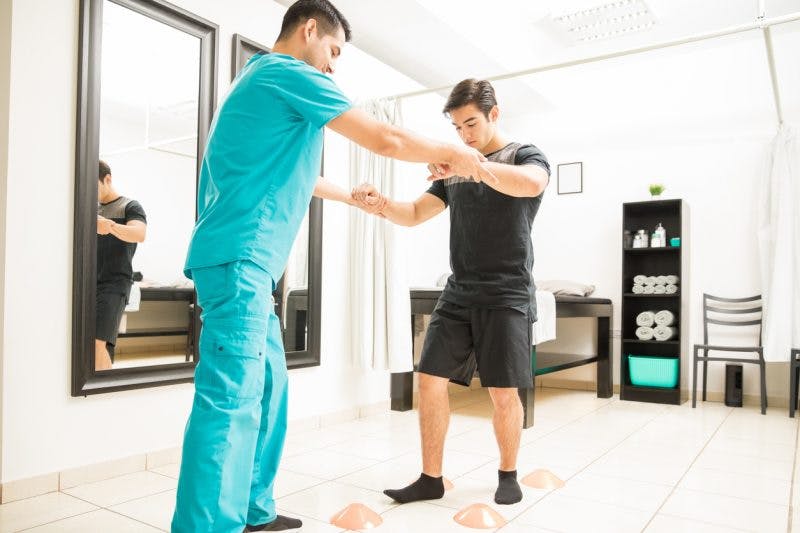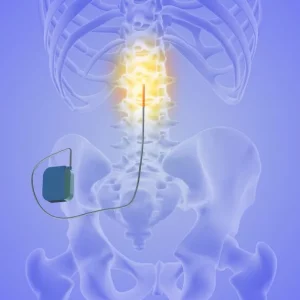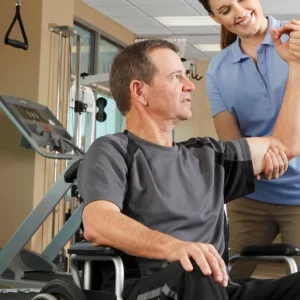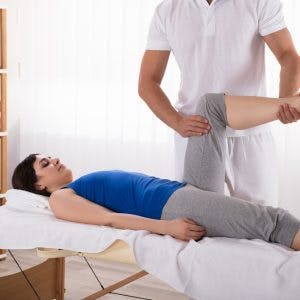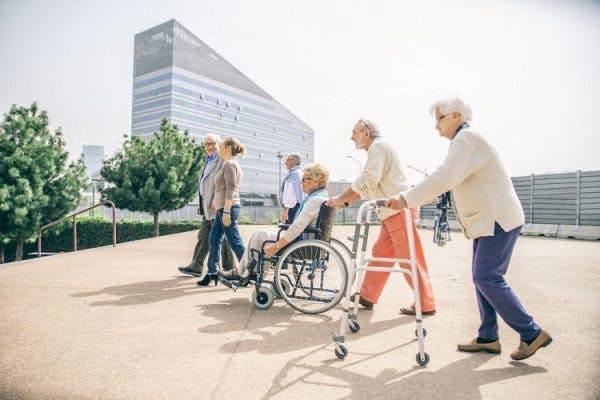Quadriplegia describes paralysis in both the upper and lower extremities. It’s generally the result of injury to the cervical region of the spinal cord (the area that makes up your neck). Depending on the type and severity of injury, quadriplegia can leave individuals permanently paralyzed, but it can also be milder and have a greater potential for recovery.
To help you understand how to recover from quadriplegia, this article will discuss:
Is It Possible to Recover From Quadriplegia?
For many, recovering from quadriplegia after incomplete spinal cord injury is possible, while the motor/sensory recovery outlook following a complete spinal cord injury is less favorable. Ultimately, individuals with SCI must retrain their body, brain, and spinal cord to work in sync again.
One of the most crucial parts of recovering from quadriplegia is to be aware of your body. This means keeping track of returning sensations or movements and developing them through massed practice. Every time you move, the spinal cord is stimulated. The more you repeat weakened movements, the better the spinal cord gets at understanding there is a demand for them.
This encourages undamaged regions of your spinal cord to utilize neuroplasticity (its ability to rewire its neural circuitry) to recover affected movements. With consistent practice, these new connections get stronger and the movements begin to feel more natural.
However, it’s important to keep in mind that not all individuals are able to recover mobility after spinal cord injury. The following section will discuss the various factors involved in determining recovery outlook.
What Factors Affect Quadriplegic Recovery?
The recovery outcomes of every spinal cord injury will vary based on the completeness of injury and how aggressively recovery is pursued.
Below, we’ll discuss the various factors that can affect one’s potential to recover from quadriplegia.
1. Severity of Injury
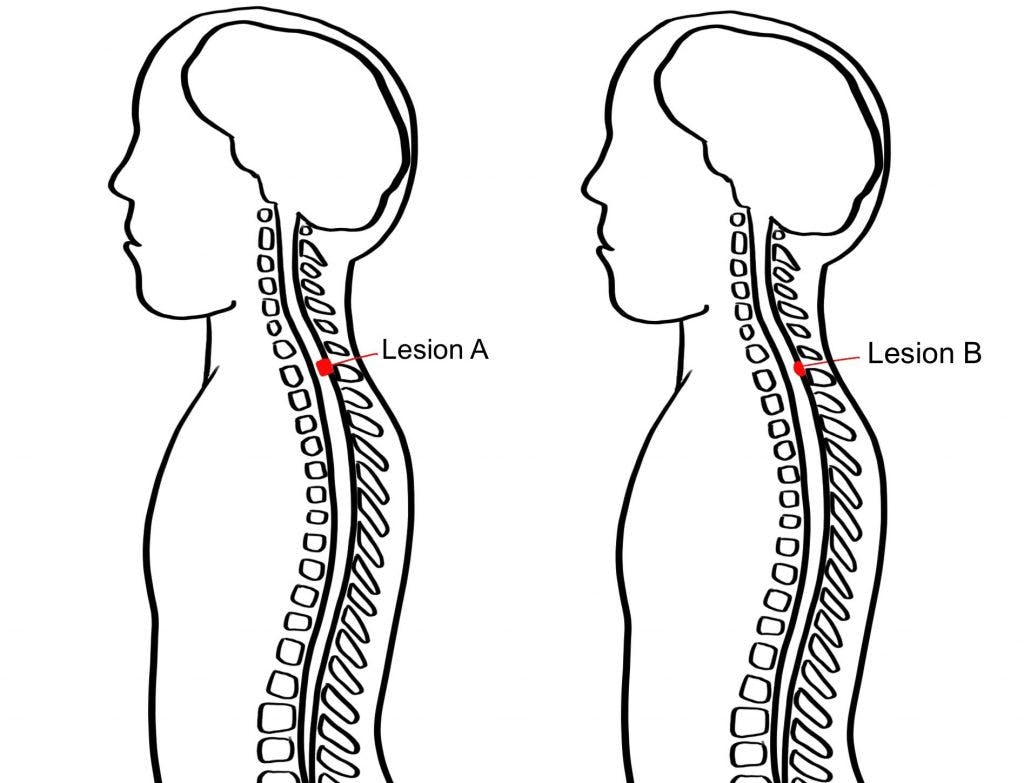
The severity of a spinal cord injury will depend on how complete the lesion is. A complete spinal cord injury indicates that all movement and sensation below the level of injury has been lost. This occurs when all neural pathways at the level of injury are damaged, resulting in no spared connections between the brain and areas below the level of injury.
In contrast, an incomplete injury results in some degree of movement and/or sensation being spared below the level of injury, as some neural connections at the level of injury remain intact. For example, looking at the picture above, Lesion A is going to result in more weakness than Lesion B because more neural pathways are going to be interrupted.
The more weakness or paralysis, the more functions will need to be recovered. As long as the injury is incomplete (the spinal cord is not severed all the way through), motor recovery to some degree is possible.
Individuals who have sustained a complete spinal cord injury are generally unable to regain lost movement and sensation due to the inability to utilize neuroplasticity. Although there are some promising solutions currently being researched, the loss of mobility and sensation after a complete spinal cord injury is usually considered permanent.
However, even though they may not recover their mobility or sensation, there are many adaptive techniques and devices that individuals with complete SCIs can utilize to optimize their functional independence and quality of life.
SCI patients with less severe quadriplegia may be able to move their arms and hands with weakness, while those with more severe quadriplegia may not be able to move their arms at all.
The higher your level of injury, the more parts of your upper body will be affected. For example, a C4 SCI patient will experience paralysis from the shoulders down while a C8 SCI patient will be able to move their arms, with some impaired hand function.
2. Participation in Rehabilitation Therapies

Rehabilitation for quadriplegia after spinal cord injury consists of physical and occupational therapy.
Physical therapy will use exercise to strengthen your muscles, improve range of motion, and build endurance. Individuals with incomplete quadriplegia may be able to move certain parts of their arms, legs, or torso and will need physical therapy to improve those functions.
Occupational therapy will teach you how to adjust to everyday life with an SCI by focusing on activities of daily living like eating, toileting, and grooming.
Those with more severe quadriplegia will likely need a caregiver to help them with these activities, while those with less severe quadriplegia may be able to regain independence by strengthening their bodies, learning how to use adaptive tools, and learning specific ways to move to accomplish these daily tasks.
Additionally, in some severe cases of higher-level SCI where speaking, breathing, and/or swallowing functions have been impacted, speech therapy rehabilitation may also be involved.
3. Timing
Generally, the most progress in recovery from quadriplegia is seen within the first 6 to 12 months after injury. This is because the central nervous system experiences an increased state of plasticity after injury.
However, it’s important to understand that there is always potential to recover from an incomplete spinal cord injury, if you’re willing to put in the work. Even after that period of increased plasticity, your central nervous system is still capable of adapting and rewiring itself. Many spinal cord injury patients continue to see results years after their injury.
4. Spinal Shock
You might be in for a surprise if you experience spinal shock following your spinal cord injury. Spinal shock refers to the temporary loss of motor control, sensation, and reflexes below your level of injury.
It’s caused by swelling of the spinal cord. When your spinal cord experiences too much swelling, blood flow to areas below the injury can get cut off and cause the body to dysfunction. Once the swelling starts to die down, functions may gradually return and you will have a better indication of what you truly can and can’t control.
It’s important to consider spinal shock following a spinal cord injury because many people believe they have complete injuries due to the total loss of function; it isn’t until functions start to return that they find out it was spinal shock and that they actually have incomplete SCIs.
Quadriplegic Recovery Stories
Need to see recovery from quadriplegia to believe it? Below, we’re sharing 2 recovery stories.
Keep in mind that every spinal cord injury is unique and results will vary from person to person. Everyone is on their own recovery journey, so it’s important to focus on intensive training and trust the process.
Hayden’s Quadriplegia Recovery Story
Hayden sustained a C4 spinal cord injury after getting tackled in a football game. He was paralyzed from his shoulders down and had to undergo surgery to stabilize his spinal cord. After three and a half months in an intensive rehabilitation program, he was able to walk again.
Kedar’s Quadriplegia Recovery Story
Kedar’s cervical spinal cord injury left him paralyzed from the chest down. The video above shows his rehabilitation progress over three years.
He gradually transitions from using a wheelchair to standing, from standing to training on parallel bars, from parallel bars to using a walker, and from walker to elbow crutches. Slowly, he was weaned off assistive devices and learned to walk on his own. Kedar proves that even years after spinal cord injury, quadriplegic recovery is possible if you continue to diligently work for it.
Understanding Quadriplegic Recovery After Spinal Cord Injury
While it can be frightening to experience weakness or paralysis throughout the body, many individuals with quadriplegia after incomplete spinal cord injury are able to recover their mobility. Through consistent, task-specific, and intensive practice, individuals can retrain their spinal cord to make adaptive changes and improve movement patterns.
We hope this article helped you understand that recovery from quadriplegia is possible.
